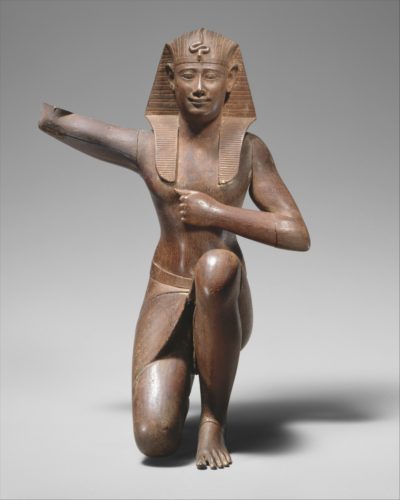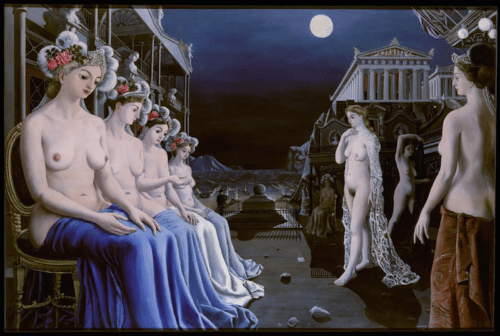A November afternoon in New York City. 69 degrees Fahrenheit—perfect weather to spend a day at the Met. My friend Kirsten and I take the subway from Union Square up to the East Side, predictably disoriented when we emerge, initially walking west when we need to go east and down when we should be going up. We finally make it to 5th Avenue and 83rd, awed by the colossal columned building and its esteemed steps.
Swarms of people meander about the cavernous lobby, rounding up their troops, orienting themselves, appraising the massive Pharaoh sitting in the center. We devise a game plan that is hardly to be followed, venturing first into the famed Ancient Egyptian gallery.

Now that I am taking an introductory Art History course, I can actually appreciate this ancient enclave of the museum, one I used to brush off as not art but artifacts, too antiquated to have any pertinent meaning to me. I recognize the composite views of the bodies depicted, with the legs positioned one in front of the other and the torso twisted and facing its audience. I notice the Ritual Figure, notable for its deviation from the standard canon of Egyptian statue stances. It looks primed for some sort of prayer, one arm bent and the other extended, kneeling deferentially. I’ve never seen anything like it.
Eager to make our way through as many galleries as time permits, Kirsten and I rush through the rest of Ancient Egypt until we reach Colonial America. Initially unsure of what Colonial American art looks like, we curiously walk past porcelain dishware designed in a French style, and still life inspired by the Dutch tradition. We reach an elliptical room, either side of which is covered by the magnificent

It’s American art but of a French scene: outside, among the perfectly manicured gardens at Versailles. Its tremendous size and panoramic nature draws you into its world, enveloping you, transporting you. The colors are pretty pinks and soft browns, light greens and pale blues—appealing but subdued, suggesting that the time is just before sunset: the golden hour. The artist, John Vanderlyn, cheekily painted himself in the scene, milling about with Czar Alexander I and King Frederick William II of Prussia. Kirsten and I stay in this room for longer than we look at any other piece of art—it’s enchanting, and we don’t want to leave the gardens or our good friends Johnny, Alex, and Freddy.
Alas, we move on. I am eager to make it to the Contemporary art rooms, and as soon as I walk in I see

I’m immediately seduced by the midnight blues and the unrepentant nude women. The description on the side entices me more: “Unabashedly unselfconscious in their states of undress, the women are formidable, even threatening, in their quiet seduction. In the distance, a group of beached mermaids mesmerizes a lone man in a bowler hat. Ambiguous in meaning, the painting evokes enduring themes of love and erotic fantasy.” The scene weirdly reminds me of the Pirates of the Caribbean ride at Disneyland, only here the women have all the power, not the pirates. The scene is weird and almost surrealist; I’m not sure what is happening or why, but that does not repel me; in fact, it increases the painting’s appeal. This painting makes me think, perhaps I should major in Art History. I could write a thesis on this work of art alone. Interrupted from this reverie, I realize I’ve lost Kirsten. The Contemporary wing is big—I should probably start looking.